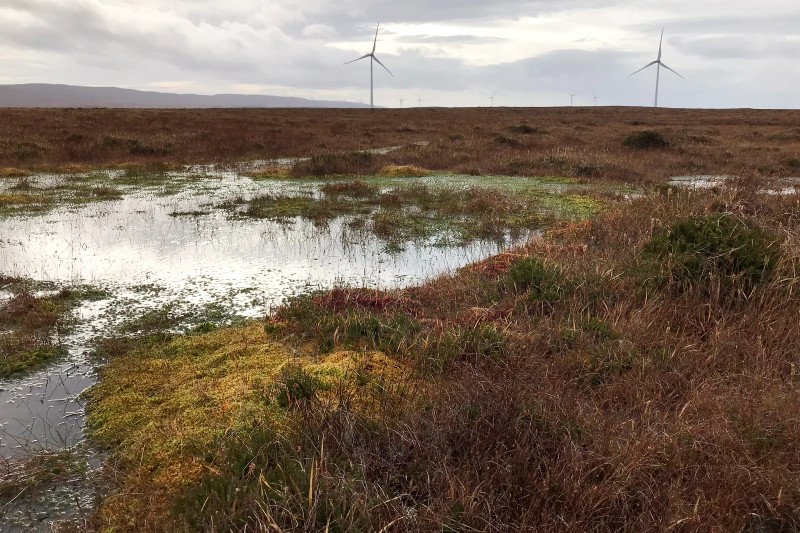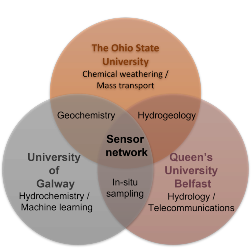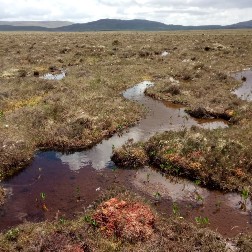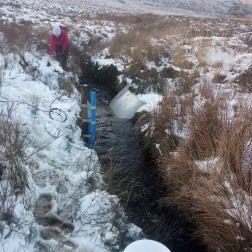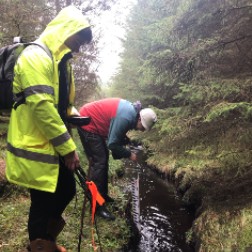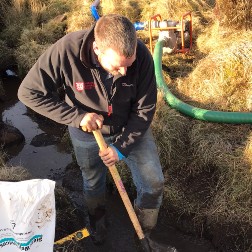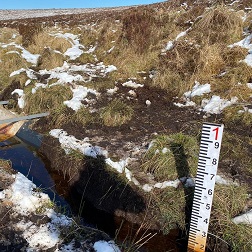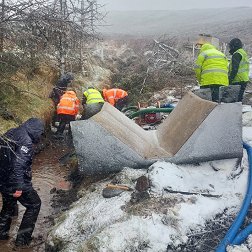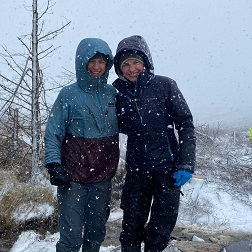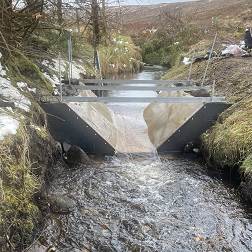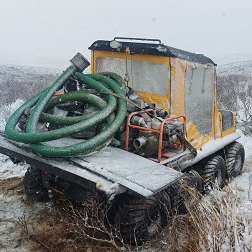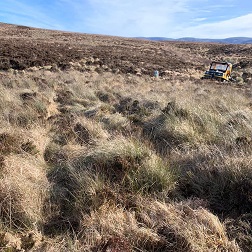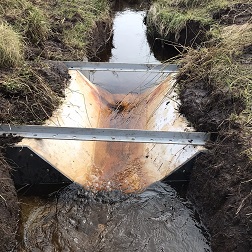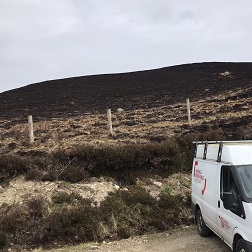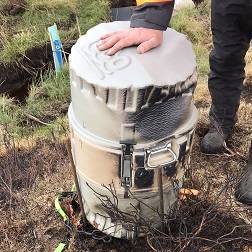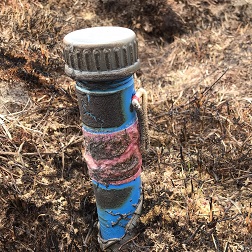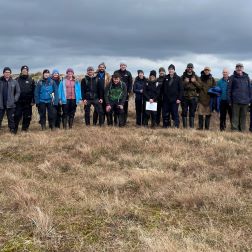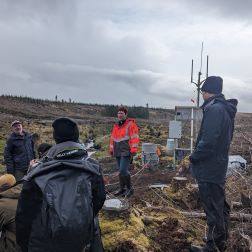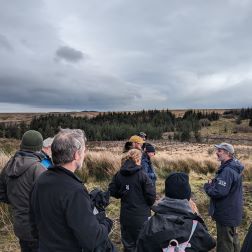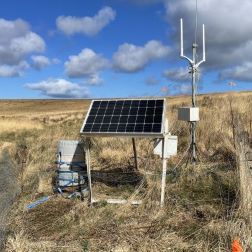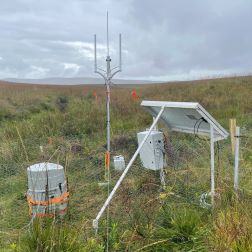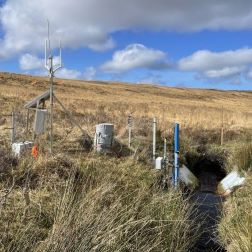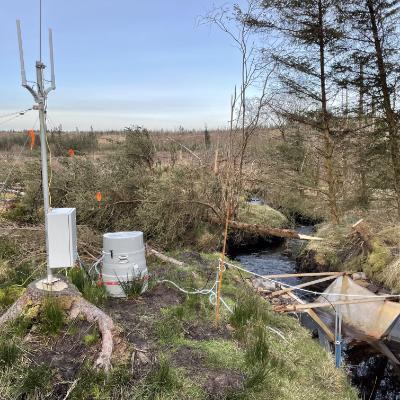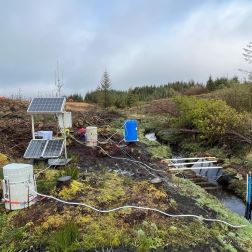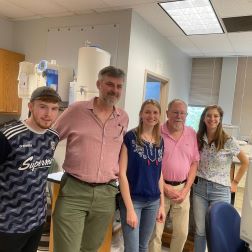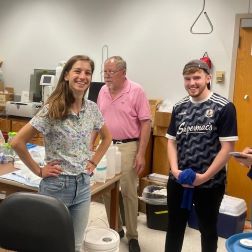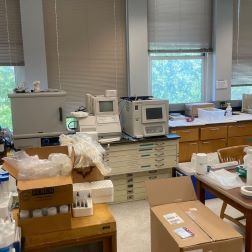Sensor Application to Peatland Hydrology in Remote Environments (SAPHIRE)
Background
Despite comprising only 3-4% of the Earth’s land surface, peatland contains around a third of the Earth’s soil carbon, and twice the amount of carbon contained within the Earth’s entire forest biomass. Peat accumulates when dead organic plant matter is unable to fully decompose owing to deposition in a water-logged, anoxic environment, therefore serving as a carbon sink. Considerable volumes of water are stored in properly functioning peatlands, buffering heavy rainfall events and consequently serving as a natural flood defence system. On the island of Ireland, approximately 68% of drinking water originates from its peatlands owing to their inherent storage and natural filtration processes.
More than 80% of peatland in Ireland is degraded as a result of anthropogenic activities, primarily cutting and artificially draining peatlands to reclaim land for agriculture and forestation or harvesting peat for fuel or compost. These activities impact peatland hydrological flow; the critical control supporting growth of peat accumulating plant communities and preventing the release of greenhouse gases by inhibiting microbial oxidation.
Impacts of degraded peatlands:
- altered stream flow regime and possible elevated flooding risk
- degraded water quality and consequently higher water treatment costs
- reduced water security, owing to the reduced capacity of peat to store water
- reduced aquatic biodiversity
- loss of terrestrial biodiversity
- reduction/loss of carbon sequestration capacity
Research Aim
In order that intact peatlands are conserved, and degraded peatland restoration projects are successful, characterisation of the processes occurring in intact peatlands are required to define target conditions and inform policymakers.
Continuous and high frequency data is essential to capture the physical, chemical, and biological processes that periodic in-situ sampling cannot fully represent, particularly owing to the practical difficulties of accessing remote sites and the requirement to capture data during storm events.
The development of robust field sensors enables long term acquisition of reliable scientific data in extreme environments, that can serve as proxies to more costly and labour-intensive sample collection and laboratory analyses. The addition of commercial telecommunications systems facilitates remote access to sensors allowing researchers to see data in real time and adjust how it is collected as required.
Therefore, the project aims to develop a remote sensor network with telemetry, to access data and direct sampling regimes, to:
- develop a protocol for characterising hydrological processes in remote areas
- improve our understanding of peatlands
- provide state of the art data for numerical modelling of flood responses
A tripartite research and development partnership between the United States of America (USA), Republic of Ireland (ROI) and Northern Ireland (NI) have awarded the SAPHIRE project a grant of €341,350.
Contributors include:
Science Foundation Ireland (SFI) - ROI
The National Science Foundation (NSF) - USA
The Department for the Economy (DfE) - NI
The Health Research Board - ROI
Recent papers published by research group collaborators:
Flynn, R., Mackin, F. and Renou-Wilson, F., 2021. Towards the quantification of blanket bog ecosystem services to water (No. 378, p. 29). EPA Research Report.
Lyons, W.B., Carey, A.E., Gardner, C.B., Welch, S.A., Smith, D.F., Szynkiewicz, A., Diaz, M.A., Croot, P., Henry, T. and Flynn, R., 2021. The geochemistry of Irish rivers. Journal of Hydrology: Regional Studies, 37, p.100881.
SAPHIRE is a tripartite research and development partnership with collaborators from Queen's University Belfast (QUB), University of Galway (UoG) and Ohio State University (OSU):
Dr Hannah Lehnhart-Barnett (UoG)
Professor W. Berry Lyons (OSU)
Mrs Vicky Preece (QUB)
Dr Devin Smith (OSU)
#6 Clean water and sanitation
#9 Industry, innovation and infrastructure
#12 Responsible consumption and production
#13 Climate action
#15 Life on land
#17 Partnerships for the goals

